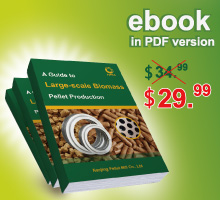The true nature of the biomass energy pellets is to pulverize and then process the forestry and agricultural plants into the pellets which is convenient to transportation, helpful to improve the combustion efficiency and to reduce air pollution.
The features of biomass energy pellets are renewable, environment friendly (very low sulfur, and chlorine content), zero carbon dioxide cycle emissions and high heat value content, etc. In the practical operation, any kind of the residues from forestry, agriculture, and industry such as sawdust, stalks of corn, cotton and reed, rice husks, straws, wood shavings, bamboo dusts, garbage, plastics, begasses, tree barks, logs, primed branches, silt, cloth, etc, can be collected and processed into pellets for business operation on the condition that they are residues, combustible and profitable in the sales marketing. Take silt and garbage for example. They’ve become one of the serious urban pollution problems. However the silt and garbage can be collected, categorized, dried, and pelletized with the materials that have high heat value and can reduce the emission of noxious substance during combustion. In this way, the win-win situation can be achieved for the enterprise, the government, the city, and the environment. The characteristics of the pellets vary with the different features of raw materials. So before the construction of your pellet factory, it is necessary to learn about the heat values, size, ash content, and sulfur, chlorine and nitrogen content of your pellets produced from your target raw material and what’s important is the analysis of your target market, such as the demand, price and profit, etc.

